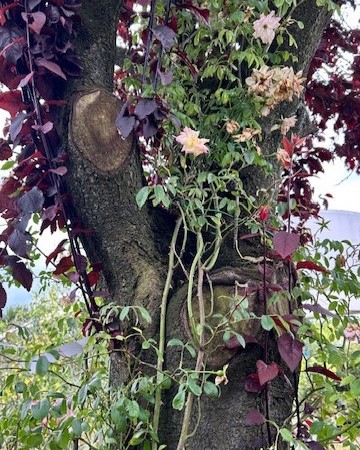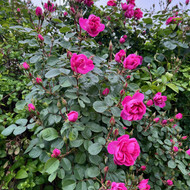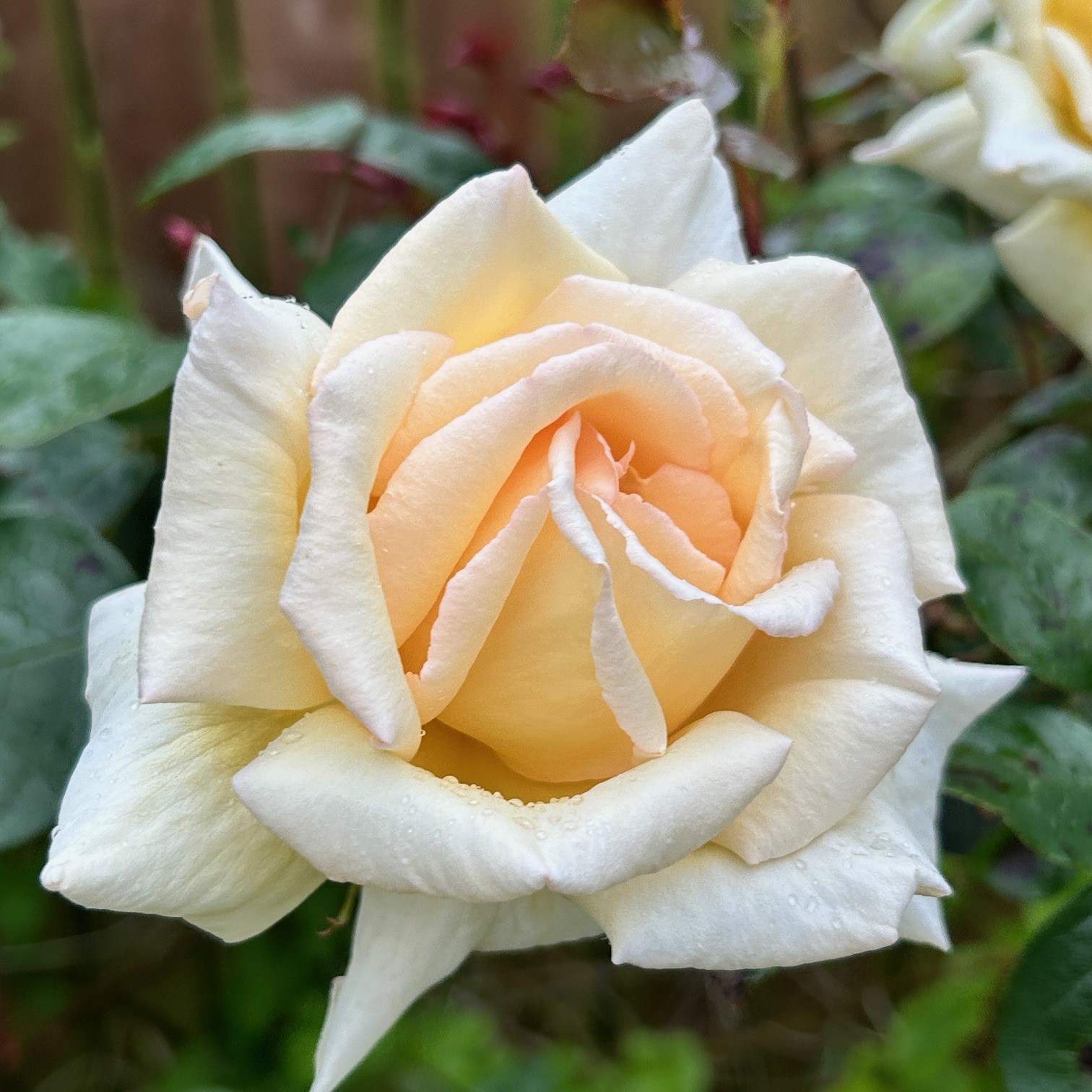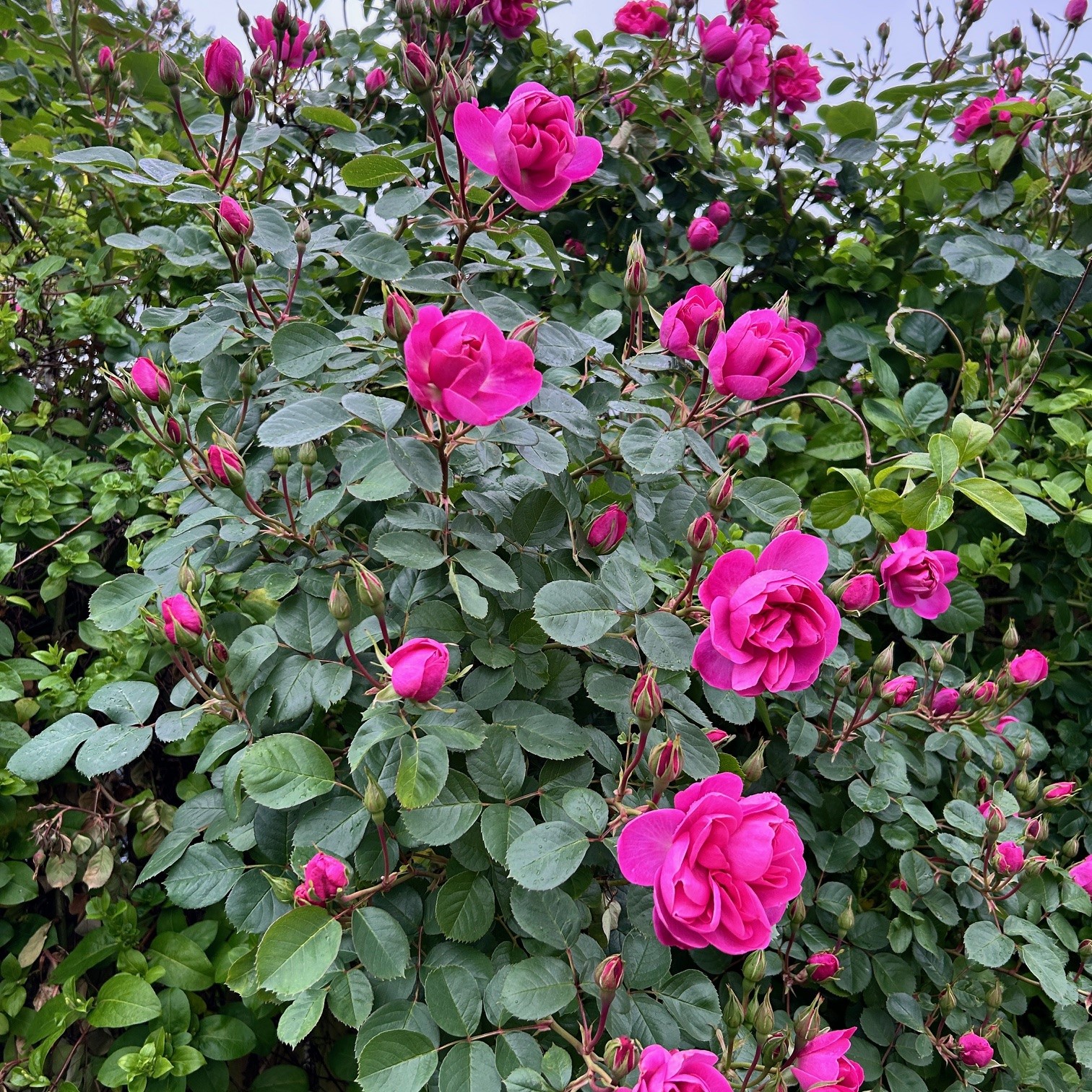There can sometimes a lot of confusion about the differences between climbing and rambling roses. In Victorian times it used to be that a rambling rose would have had the species Rosa wichuriana somewhere in its parentage, whereas climbing roses were climbing sports, or naturally occurring mutations, of normal bush roses. However intensive breeding programmes mean that the difference is nowhere near as clear cut today. There remain, however, certain general characteristics which can help when choosing which is most suitable:
- Rambling roses tend to have slender, supple shoots, whereas the growth of most climbers is stiff and strong.
- Rambling roses almost always only flower once in late June and early July, whereas most climbing roses will repeat flower.
- Rambling roses tend to be more vigorous in growth than climbing roses.
- Rambling roses tend to produce huge clusters of small flowers; climbing roses tend to produce larger Hybrid Tea type flowers, but fewer of them.
Uses:
To some extent, the uses of these two types do overlap – they can both be used to add height and colour to the garden, or to clothe walls and fences. However because of their distinct growth and flowering patterns, some are more suited to certain uses than others.
Ramblers are excellent choices for climbing up an old tree to add summer flower. They are excellent to use as screens, perhaps to cover a shed. They can also be used as informal ground cover, if left to wander between established shrubs – the effect can be spectacular, but weeding becomes much more of a chore! The vigorous growth would also make them a good choice for covering a large pergola.
Climbing roses are more suited to covering a garden wall or fence, smaller obelisks and arches. Growth can be trained either horizontally or vertically over a porch or doorway.
The decision on which rose to choose will almost always be a matter of size of area to cover, how important repeat-flowering is, as well the aesthetics of the individual flower shape and colour. It’s worth bearing in mind that rambling roses tend to have a softer, more informal look than the rigid growth of most climbers.
Planting:
Plant either as bare root roses during the winter, or as containerised plants at any time of year. Good soil preparation is essential - add plenty of organic matter such as well-rotted manure, homemade compost or leaf. Prepare a planting hole approx. 45cm in diameter, and add a small amount of bonemeal to encourage good root establishment. Plant to the correct depth – the union between the rootstock and the scion should be approx. 2.5cm beneath the soil surface. Plant firmly – tread around the base of the plant to make sure the soil is not loose.
Bare root plants should be pruned back hard to 10cm above soil level in late February /early March in the first year.
Training and pruning:
Climbing roses. Train strong stems either horizontally (along a wall or fence) or vertically (over a doorway) over the first few years, to create a permanent framework. Flowering side shoots off this main framework are summer-pruned (taking off the faded flower and a 10cm long piece of stem) to encourage repeat flowering. In autumn, either prune off or tie in any long whippy growth. In late winter, prune all side shoots back to one or two buds away from the main stems.
After several years, flowering may start to deteriorate on the oldest stems. Prune back the entire stem to one bud, and let that bud grow into a new replacement stem.
If training vertically, it is very common for the lower stems to become bare and woody, with all the foliage and flower appearing at the top of the plant. Avoid this by pruning one of the oldest main stems back to just 10cm above soil level each Spring, and training in a replacement shoot. Follow this process of renewal pruning every year and the rose will be fully clothed in flower.
Rambling roses. If using a rambling rose to scramble into an old tree, or to cover an unsightly building, pruning may not be necessary (or even possible!). However, most rambling roses will benefit from pruning in late summer or early autumn after flowers have faded. Ramblers produce the most flowers on growth made the previous summer, so the aim with pruning is to remove older wood and leave in new growth to provide flower in the following year. This can be quite tricky – some varieties such as Dorothy Perkins make a lot of young growth from the base, so pruning is quite straightforward. Others, such as Albertine tend to put on new growth above the old growth, so just give them a quick ‘haircut’.





